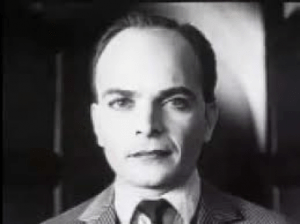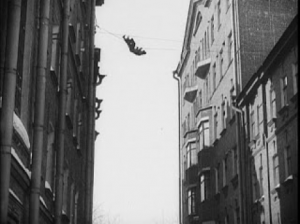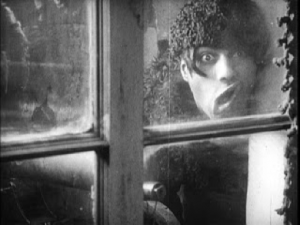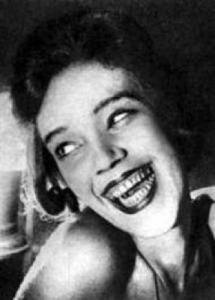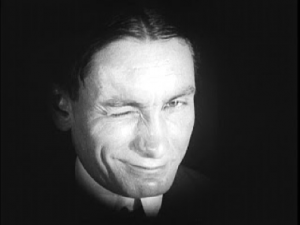In this post you will read an introduction to the Soviet filmmaker Lev Kuleshov and his group known as the Kuleshov Collective.
Lev Kuleshov (1899-1970) began his career in cinema before the October Revolution, working with the early director Evgenii Bauer in 1917 as art director on several of his films and as an actor in Bauer’s Za schast´em (In Pursuit of Happiness, 1917).
A key figure in the history of Soviet and world cinema, Kuleshov is often referred to as the ‘father’ of Soviet cinema. His contemporaries recognised his significance and said of him: ‘We make films – Kuleshov makes cinematography.’
Kuleshov’s first attempt at ‘making cinematography’ was Proekt inzhenera Praita (Engineer Prait’s Project, 1918). In 1920, he opened a ‘workshop’ at the Gosudarstvennaia shkola kinematograficheskikh iskusstv (State School of Cinematic Arts), the creation of which, in 1919, had been a key step in the Bolshevik leaders’ attempts to nationalise the film industry and bring it under state control: it was intended to train future Soviet filmmakers and teach them how to make Soviet films. Other members of the collective included Aleksandra Khokhlova (Kuleshov’s wife, who plays the ‘Countess’ in Mr West), the future Soviet directors Vsevolod Pudovkin (who plays Zhban, the ‘Count’) and Boris Barnet (Cowboy Jeddy), Vladimir Fogel´ (an extraordinary actor) and, for the few months, Sergei Eizenshtein.
Cowboy Jeddy (Boris Barnet), Mr West’s bodyguard, rides the Moscow streets
Kuleshov’s experiments
‘For the honest cinematographer,
experimentation is more important than bread.’
Kuleshov, ‘Chamber Cinema’, 1922
In his workshop, Kuleshov conducted a number of cinematic experiments to prove the importance of montage (the way images are put together in a film, ie editing/cutting) to the creation of meaning in film. Kuleshov theorised that film art consists entirely in editing. For him, montage (the juxtaposition of images) was the only source of film’s impact on the viewer. As he put it in 1922: ‘We must look for the organisational basis of cinema, not within the confines of the filmed fragment, but in the way these fragments relate to one another.. In other words, a shot could have no meaning on its own. A film was ‘built’ out of the careful positioning of individual shot-signs, which he likened to bricks – a film was built ‘brick by brick’.
Kuleshov wanted to prove that the source of the associational power of montage was in the
viewer’s consciousness, ie that it depended on his/her perception of the edited material, not necessarily on the objective reality of the filmed material itself. He illustrated this in 1918 with short film experiments demonstrating what became termed the Kuleshov effect. In these experiments, Kuleshov took a single shot of the face of the pre-revolutionary actor Ivan Mozzhukhin (1889-1939) – an existing shot, not one that he filmed especially for the experiment – and juxtaposed this shot of the actor’s face with various other existing shots: first, a plate of soup; second a dead woman in a coffin; third, a child playing with a toy.
Ivan Mozzhukhin
Kuleshov showed the different sequences to audiences, and gauged their reactions. As he had
expected, the viewers praised the actor’s extraordinary versatility of expression, and his
ability to convey the slightest nuance of emotion. Thus, when juxtaposed with the shot of the soup, the actor’s face was perceived to express hunger and thoughtfulness about the forgotten soup; they praised his expression of deep sorrow and grief at the sight of the coffin, and commended the indulgence and affection he expressed when ‘looking at’ the child with the toy.
The important point is that the audience perceived a connection between the two shots because they were juxtaposed. And this perception transformed the actual content of the individual shots and endowed them with a significance that they did not, in themselves, possess. Note the active role the audience plays in constructing meaning – each member of the audience brings his/her own emotional responses to the sequence of images and attributes those responses to the actor, investing his neutral face with their own emotional responses to the images.
Other experiments enabled Kuleshov to conclude that it was possible to create, solely thorough montage, a cinematic landscape that existed nowhere in reality. He discovered this one day when he had lost some shots of actors looking at electrical cables, strung on poles; he solved the problem by cutting together some shots of actors looking at something off camera, with some other shots of random electrical cables that had been filmed separately. As the poles and the actors had been filmed in different parts of Moscow, Kuleshov termed this effect an ‘artificial landscape’. It is also known as ‘artificial geography.’
In his experiments, Kuleshov returned to his idea about artificial geography and created more such landscapes and even people:
he filmed 2 actors walking in different parts of Moscow and cut them together in such a way that, on screen, they appeared to be walking towards each other and meeting, although in reality they had been far apart and never met
he ‘synthesised’ a woman cinematically, by combining shots of several different women’s bodies – he took a shot of one woman’s eye and cut it together with a shot of a different woman’s mouth and a third woman’s nose, etc. To the viewer it appeared that this was one woman.
The point of all these experiments was to demonstrate that physical space, physical objects and real time could be totally subservient to montage, ie the meaning and power of cinema comes not from the content of individual shots, but from how they are joined together, from their montage.
Other areas in which Kuleshov experimented included the way he used his actors. Kuleshov termed his actors naturshchiki (artist’s models) and regarded them almost as if they were mannequins. They were subservient to the director’s intentions (almost a machine, albeit a machine with a human body) and their purpose was to be manipulated by the director. He valued the plasticity of their bodies and demanded arduous physical preparation from them, requiring that they be ready to perform any physical trick, any movement of the body. They were expected to perform all their own stunts and scant regard was paid to their physical safety, allegedly. Barnet (who played Jeddy) complained that he almost died during the filming of Mr West when the high wire along which he had to crawl became so frayed it almost snapped… because Kuleshov had made him repeat the sequence six times.
Jeddy (Boris Barnet) risks life and limb
Kuleshov’s demands of his actors resulted in an extraordinary acting style. His approach was deliberately anti-naturalistic, and consequently his actors produce facial expressions and gestures that are so exaggerated that they are almost ‘grotesque’, or ’absurd’. To the modern viewer, it may appear that they are overacting, but it is important to remember that this was a conscious aesthetic technique and one that deliberately rejected attempts to create naturalistic performances.
A barbarous Bolshevik…
Neobychainye prikliucheniia Mistera Vesta v strane bol´shevikov (The Extraordinary Adventures of Mr West in the Land of the Bolsheviks, 1924)
Kuleshov’s Neobychainye prikliucheniia Mistera Vesta v strane bol´shevikov (The Extraordinary Adventures of Mr West in the Land of the Bolsheviks) needs to be understood in the context of his theorising about how to make a film. It was the first film made by the Kuleshov collective and was described by Kuleshov as ‘a verification of our working methods’.
Aleksandra Kokhlova
The film is an action-packed comedy that follows the adventures of an American business man, Mr West, as he undertakes a visit to the Soviet Union. Under the sway of reports about the Bolsheviks’ barbarism that have appeared in American newspapers, Mr West takes along his bodyguard, Cowboy Jeddy, for protection. However, while Jeddy cannot protect him from the gang of resourceful petty-bourgeois criminals who attempt to steal his dollars, somebody else can… With plenty of chases, kidnappings, well-staged fights, romance, slapstick clowning and impressive physical stunts from the actors, Mr West is exuberant and entertaining. It is also remarkable for the speed and energy of its action. Montage here creates chaotic but dynamic and exciting movement.
The films draws heavily on the comic techniques of contemporary American films. Because of the shortages of film stock in the early 1920s, Kuleshov encouraged his students to learn filmmaking by studying popular feature films, including the many foreign films that were entering the Soviet Union in the early 1920s. The majority of imports were from Hollywood, and Kuleshov and his students took particular interest in the dynamic style and sophisticated editing of the American films. Kuleshov argued that Hollywood film techniques could and should be adopted by Soviet filmmakers (ie be ‘Sovietised’), who would thus make Soviet films that would appeal to Soviet viewers, whose tastes in films were remarkably similar to those of movie-goers in the capitalist West. This is what he and his collective set out to do in Mr West.
Zhban, the ‘count’ (Vsevolod Pudovkin)

